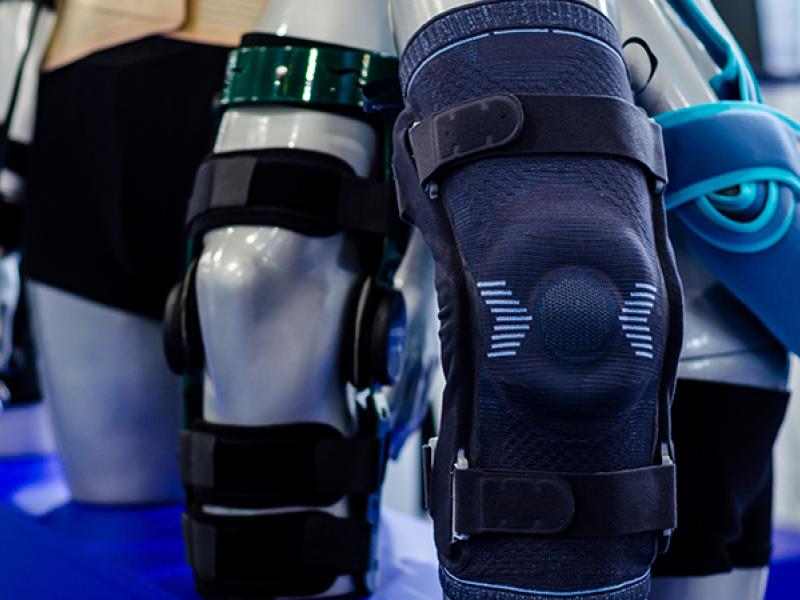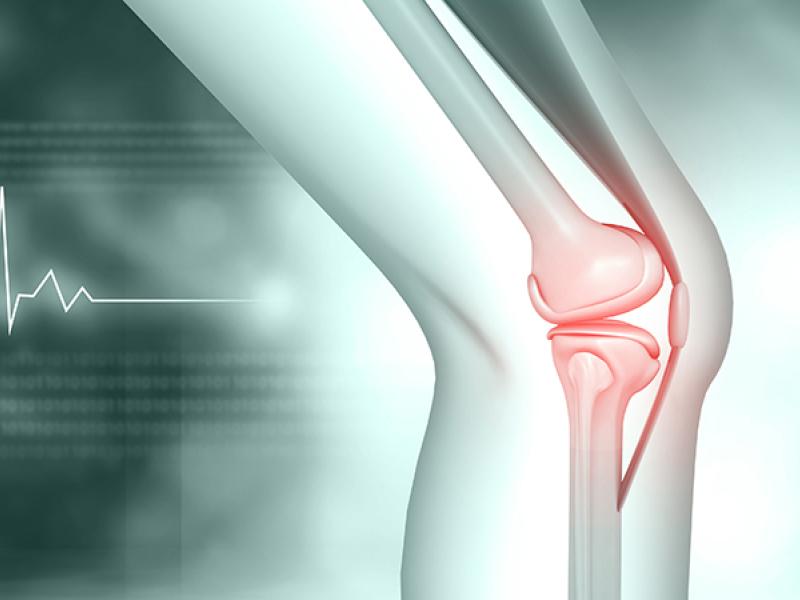Introduction
Abortion is one of the most controversial issues of modern times. In the interests of promoting understanding the controversy, we try to present the major views on abortion in as impartial a fashion as possible. We focus on the ethical arguments and underlying issues rather than on political considerations that might also be involved.
Pro-Life vs. Pro-Choice
Abortion is the termination of a pregnancy. The kind of abortion that is controversial is induced abortion, in which the embryo or fetus is prematurely removed or caused to be expelled. Induced abortions are commonly voluntary (elective). Induced, elective abortion is in contrast to spontaneous abortion, or miscarriage, in which the embryo or fetus is involuntarily expelled because of accidental trauma or disease.
The two chief positions on the morality of abortion can be called the “pro-life” position and the “pro-choice” position. The basic pro-life position holds that induced abortions are morally impermissible (morally wrong, morally prohibited). The basic pro-choice position holds that induced abortions are morally permissible (morally allowable, not morally wrong). Variations on these basic pro-life and pro-choice positions are possible and will be discussed below.
Issues in the Abortion Dispute
One way to see the abortion dispute is that opposing positions disagree because of differing perspectives on one or more key issues or factors:
- the moral status of the embryo or fetus
- the metaphysical and physical status of the embryo or fetus
- the moral rights of a person
Moral status: The moral status of an entity is:
- Whether it deserves to be treated in a certain way.
- Whether it can engage in right and wrong behavior.
The first notion falls under the rubric of whether and in what sense the entity is a moral patient, the second is whether it is a moral agent.
As moral patients, humans are normally considered to have moral rights – the right not to be harmed by others, for instance. Humans are also normally considered moral agents in that their behavior can be judged right or wrong. They are under moral obligations and duties to behave in a certain way toward other moral patients.
Metaphysical and physical status: Metaphysics deals with questions about the ultimate nature and categories of reality. The metaphysical status of a being is how it should be classified with respect to what we take to be the most basic categories and types of reality and experience: whether it has subjective existence or is an object only, whether it is a person, whether it has or is an immaterial soul, etc.
The physical status of a being is the nature of its physical (and mental) existence. It could be alive, dead, able to exist on its own, be at a certain stage of maturity, be of a particular species, and possess physical organs and capabilities such as a brain, central nervous system, and intelligence.
Human beings are creatures of the species homo sapiens. (Some anthropologists speak of several subspecies, with present modern humans as homo sapiens sapiens and earlier modern humans as an extinct subspecies homo sapiens idaltu.) The intent is to denote a particular creature biologically, with humans clearly different than chimpanzees, dolphins, and oak trees.
Philosophers use the term “person” in a sense distinct from the phrase “human being.” “Human being” is a biological term, while “person” is a metaphysical designation referring to a being with certain traits such as consciousness, reason, moral agency and moral patiency, communication skills through language, the ability to have a life that matters to the person, the ability to live a meaningful life, etc. The exact criteria for personhood are debated.
Generally human beings are considered persons, but there could be persons who are not human beings. For example, if members of another species were rational and moral but just not homo sapiens, biologically, we might still say they were persons. Creatures of the species homo neanderthalis (“Neanderthal man”) buried their dead and used tools but are not usually considered to have been human beings, though they were humanlike, and it’s possible we would have thought of them as persons. Another example of persons not human would be a race of alien beings living on another planet who behaved morally and rationally but were clearly not human. (We are not saying there definitely are nonhuman persons, just that there could be, if “human being” is a biological designation and “person” designates a being more by functioning and capacities.)
The moral rights of a human person: Human beings are typically considered to be persons, so we may speak of human persons. Apart from having official legal rights granted by governments, human persons are considered to have “human rights,” which are moral rights, entitlements to be treated in certain ways. A human person has rights to life and liberty (the right not to be harmed and the right to be free to pursue one’s own way of life as long as it doesn’t interfere with the liberty of others).
The right to life includes the right not to be murdered. But self defense is generally considered morally permissible. One does nothing wrong in killing a violent attacker if that is necessary as a last resort to save one’s own life. But if every human person has a right to life, the question arises of whether killing the attacker in self-defense violates the right to life of the attacker. Different interpretations of this situation are possible. One could say that the attacker has a right to life but that right may be overridden or outweighed by other considerations, such as preserving one’s own life. Or one could say that rather than having a right to life per se, a human has a right not to be killed unjustly. Killing a violent attacker is an instance of a just killing. Or one could say that an innocent human person has a right to life but the attacker is not “innocent” and so has no such right to life.
Relevance of these issues to the abortion controversy: The morality of abortion depends to some extent on how the embryo or fetus deserves to be treated: in what sense it is a moral patient, whether it has the moral rights not to be harmed and to pursue a life, what kind of moral consideration it is owed. We seem to take the moral status of a being to depend on its metaphysical or physical status. For example, we think humans and rocks deserve different kinds of treatment because they are different metaphysically or physically. So it might be that the moral status of an embryo or fetus depends on its metaphysical or physical status: whether it is a person, whether it is conscious, whether it has a soul, etc. Moral status alone might not determine whether abortion is morally permissible, though, for some thinkers believe other factors might override the moral status of the fetus.
In summary, one way of looking at the relevance of the above issues to abortion is:
- The moral status of the embryo or fetus, unless overridden, might determine whether it was morally permissible to terminate the pregnancy.
- The moral status of the embryo or fetus might derive from or be supported by the metaphysical or physical status or nature of the fetus.
- There might be other morally-relevant factors or considerations that would outweigh or override the moral status of the embryo or fetus and change the ethical judgment about the permissibility of abortion.
The situation is complicated by the fact that the embryo and fetus are undergoing continual physical development. The physical development of the embryo and fetus occur during a nine-month period. First an egg cell (oocyte or ovum) is fertilized by a sperm cell (spermatozoon) during a 24 hour long process. During this time the sperm cell moves through the area surrounding the egg cell, enters the egg cell, and merges its genetic material with the genetic material in the egg cell. Completion of this process results in a single-celled zygote with chromosomes from both sperm and egg cells.
About 30 hours after fertilization is complete the zygote begins cell division and the number of cells increases. “Twinning” (dividing into identical twin embryos) may occur up to the eight-cell stage. (This is different than fraternal twins from two distinct fertilized egg cells.) At nine cells, the cells start arranging themselves into a pattern. At four days after fertilization the organism moves to the uterus, floats for about two days, and then it attaches itself to the uterine wall between the seventh and twelfth day (implantation). At the end of the first week the organism is attached to the uterine wall and is being nourished by the mother.
After implantation, cells further differentiate and the embryo is increasingly structured. Some rudimentary form of the heart is pumping the embryo’s own blood within a month. There is some indication that brain waves can be recorded by about six weeks. At the end of eight weeks the embryo is “swimming” within a fluid filled amniotic sac. At nine weeks the organism is a fetus, the heart is almost fully developed by the tenth week, within a few more weeks the brain is fully formed, and by the fifteenth week the eyes face forward and the ears are on the side of the head. Movement felt by the mother (“quickening”) may occur from about the eighteenth week and the fetus is viable from about the twenty-second week, when it is eight inches long and weighs a pound. Birth is usually after thirty-nine weeks.
During the process of embryonic and fetal development, the organism is alive, attached to the mother for life support, and increasingly resembling a human baby in appearance. The developing organism is termed an “embryo” up until the end of eight weeks and after that a “fetus.” Use of the term “pre-embryo” for up until the fourteenth day is controversial.
Some thinkers believe that the moral status of the embryo or fetus changes depending on its particular stage of physical development. For those thinkers, before a particular point abortion is morally permissible, while after that point it is impermissible. But there is disagreement about where that line of demarcation is: viability (when it can survive outside the womb), quickening (detectable movement within the womb), brain waves occurring, resembling a baby in appearance, etc.
Implicit Lines of Reasoning Behind the Positions
Unfortunately, due to the tremendous acrimony each camp feels toward the other, usually neither side attempts to understand the other. Pro-lifers shout “The fetus is a human being!” at pro-choicers, and pro-choicers shout back “A woman has a right to do what she wants with her own body!” Each side remains perplexed about why repeating these slogans fails to convince the other side.
People hold views about the morality of abortion for various reasons, some political or emotional. But it is possible to depict one or more lines of reasoning each side implicitly relies on when they are thinking and arguing rationally.
The simplest line of reasoning behind the pro-life position is something like the following:
- The embryo or fetus is a person
- Persons have a right to life
- Therefore the embryo or fetus has a right to life
- It is wrong to kill a being with a right to life
- Therefore it is wrong to kill an embryo or fetus.
Many variations on the above are possible.
- Sometimes the claim is not that the embryo or fetus is a person but that it is a human being. Often the thinker making this claim means by “human being” something close to what philosophers mean by “person.” At other times the thinker really does mean to identify the embryo or fetus as falling under the biological category of homo sapiens.
- Sometimes the belief is not that the embryo or fetus is a person but that it is a potential person. The assumption is that a potential person has actual rights, not just potential rights, and these include the right to life.
- Pro-lifers sometimes also believe that, except in cases of rape, the mother and father of the embryo or fetus should be held morally responsible for conceiving the child and bear the consequences of their actions. The attitude is that if they didn’t want a child they should have taken better precautions. Killing an innocent embryo or fetus is not a proper way to bear that responsibility.
- Some pro-lifers believe that in certain exceptional cases abortion is morally permissible. Such cases include situations where it is necessary to abort the fetus to save the life of the mother, or where it is highly likely the mother would die if the fetus were carried to term. Other more controversial cases involve incest and rape. In such cases the interpretation would be that the fetus is not innocent or that the right to life of the fetus can be overridden or outweighed by these other factors or circumstances.
The basic pro-life position depends on an analogy drawn or assumed between the embryo or fetus and a normal, innocent human being or person. It is believed that the embryo or fetus is relevantly similar to the normal human being or person and so it has the same right to life and should be treated in the same way as any other being with a right to life. Pro-lifers take this similarity to be obvious and the analogy to be easy to understand; hence they are perplexed and angered at the pro-choicers’ seeming refusal to treat an embryo or fetus in the same way they would treat a normal, innocent human person.
There are two basic lines of reasoning assumed by different pro-choice groups. One line of reasoning sees the embryo or fetus as not a person and so not having the right to life possessed by a person. The other line of reasoning grants that an embryo or fetus might be a person but sees other factors or considerations as outweighing or overriding any right to life of the fetus.
“Not a person” argument
- Only persons have a right to life.
- An embryo or fetus is not a person.
- Therefore an embryo or fetus has no right to life.
- If a being has no right to life, it is not wrong to kill it.
- Therefore it is not wrong to kill an embryo or fetus.
Overriding factors argument
- The right to life of any being may be overridden by other factors occurring.
- An embryo or fetus may have a right to life
- Therefore any possible right to life of an embryo or fetus may be overridden by other factors occurring.
- If a being’s right to life is overridden by other factors occurring, it is not wrong to kill that being in those circumstances.
- Therefore it is not wrong to kill an embryo or fetus if certain factors occur.
The second argument might be used by pro-lifers who believe that rape, incest, or saving the life of the mother are such overriding factors, but most pro-choicers have in mind others factors such as the following:
- the child having significant potential for an impairment or genetically-based disorder
- an unstable or unloving home environment
- major disruption of the pregnant woman’s life plans
- financial hardship of the pregnant woman
- women will die from closet abortions if driven underground
- the basic freedom of a woman to determine the course and use of her own body.
There might be debate among pro-choicers over whether the fact that a new child would be a minor inconvenience would be sufficient as a factor to override or outweigh a right to life.
The first argument would seem to have an easier time justifying abortion because it could support the view that no particular reason need be given to justify an abortion. However, some pro-choicers hold that even through an embryo or fetus is not a person and has no right to life, it deserves some sort of moral consideration. Abortion should not be taken lightly. The embryo or fetus deserves respect. Abortion should not be undertaken for frivolous reasons – such as the potential child not having the preferred eye-color (assuming that could be determined).
Pro-lifers and pro-choicers can find many places to disagree: the moral status of the embryo or fetus (whether it has the right to life), the metaphysical status of the embryo or fetus (whether it is a person), and whether moral rights can be overridden and if so what kinds of factors or considerations can override.
Considerations in Deciding on the Morality of Abortion
One could argue that the first step in rational resolution of the abortion controversy should come from mutual understanding of the various positions. After that would be needed discussion, agreement, and resolution of the many issues involved. Besides the discussion of relevant issues above, here are some other considerations that have been raised.
Mother’s freedom over her body: Pro-choicers sometimes assume that the fetus is part of the mother’s body and the mother can do what she wants with her body. But many people think that you can’t always do what you want with your own body. For example, some people think killing yourself is wrong, most of us think using your body to intentionally hurt another innocent person is wrong, damaging your body through substance abuse is often considered wrong (what if you can no longer work to support your family?), etc.
Fetus as part of the mother’s body: The relationship between the mother’s body and the embryo or fetus is unique. Is it so clear that the fetus is “part” of the mother’s body, like an internal organ is part of the body? Is it because it is physically located within the body of the mother? If through some bizarre technology the fetus were physically located outside her body, would the same claim be made? If it is because they are connected, doesn’t that then also mean the mother is part of the body of the embryo or fetus? If it’s simply that the mother’s body supports the embryo and fetus, how does this make one part of the other? Many things are supported by other things without the former being a part of the latter – a child is supported by a parent, and a hospital patient is supported by a heart-lung machine, for instance. Is it because the fetus and other tissues are growing from the egg cell that was part of the mother? The egg cell might have been part of her body, but the sperm cell was not, and the resulting organism is from both. So if what makes the fetus part of her body is that it grew from her cell, then the fetus is equally part of the father’s body. What is part of the body of the mother is the uterus, of course, and the uterus is in contact with other tissues that are not there when she is not pregnant, and which are not obviously considered the mother’s body parts – the uterine sac, the placenta, etc. The point is not that the fetus is not depending on the mother or not in contact with the mother, but that it is not clear that all the relevant tissues – especially the fetus – can be described without controversy as belonging to the mother’s body. What we have is its own organism with its own genetic makeup and its own body.
Arguments by analogy: Much of the thinking on each side of the dispute consists of implicit arguments by analogy. Pro-life: A fetus and an adult are both persons, so since an adult has a right to life so too does a fetus. Pro-choice: Or a zygote is more like an unfertilized egg cell than an adult, so the zygote should have the same moral status as the egg cell.
This reasoning by analogy is not always made explicit or even realized by advocates on each side, and ironically both sides struggle with preventing analogies as much as depending on them. The pro-lifer points to similarities between the embryo or fetus and children or adult human persons, claiming all have physical or metaphysical similarities so they should have equal moral status (moral rights). But considering the undeveloped brain of the embryo and early fetus, and lack of self-consciousness of the fetus, perhaps the better analogy is with a nonhuman animal. However, they would like to prevent this parallel, because most people do not recognize nonhuman animals as having any right to life.
The pro-choicer draws analogies between the fetus and nonhuman animals, saying since the latter are not persons neither is the former. But then if personhood requires some level or reasoning or even self-consciousness and so excludes nonhuman animals and fetuses, then so too it excludes newborn infants, and the infants look like they don’t have a right to life; a conclusion the pro-choicer wants to avoid.
Legitimate reasons to get an abortion: Pro-choicers often claim that the embryo or fetus has no right to life because it is not a person. Some of these same people then claim that there can be illegitimate reasons for an abortion, such as to choose eye color. But if the fetus has no right to life, and killing it is not wrong, why exactly shouldn’t one get an abortion for any reason or no reason at all?
Moral status and its basis: How exactly does the moral status of a being derive from its physical or metaphysical status? The usual tactic is to use analogy to say, for example, normal adult humans have a certain physical or metaphysical status, and we grant them a moral status, so therefore anything relevantly similar in physical or metaphysical status should also have that moral status. But why is it wrong to murder adult humans? The philosopher Donald Marquis in fact tries to answer such a question in his writings on abortion. Marquis suggests that the reason killing innocent human beings is wrong is the loss to the victim of the value of his or her future. A child or adult who is killed loses the value of their future experiences and activities. But then this also applies to a fetus, whose future consists of the same types of experiences. It doesn’t matter that the fetus can’t actually be valuing his or her future at a moment in time. A suicidal person might not value his or her future experiences, but yet the future can still have value for the person. So Marquis thinks he has pinpointed why abortion is wrong. Not everyone agrees with his analysis.
References
Don Marquis, “Why Abortion is Immoral,” Journal of Philosophy (1989).





